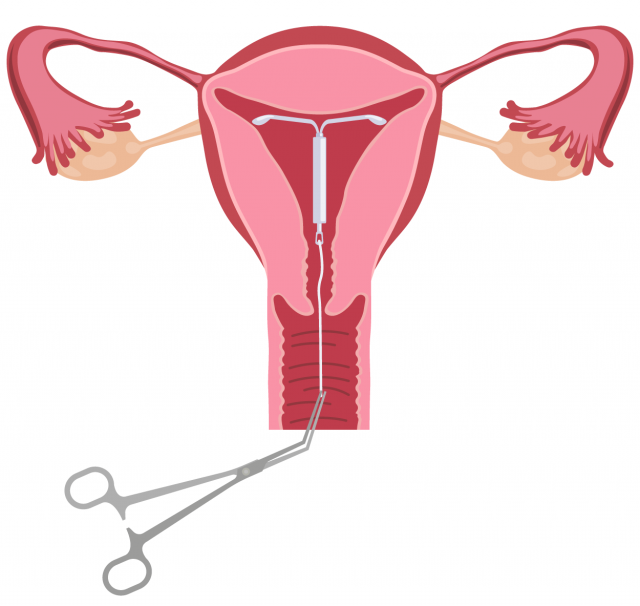IUD Removal: A Comprehensive Guide to the Procedure and Aftercare
Intrauterine devices (IUDs) have become a popular choice for contraception due to their effectiveness and convenience. However, there may come a time when you need to consider IUD removal for various reasons, such as the desire to conceive or the end of the device’s effective lifespan. In this comprehensive guide, we will explore the IUD removal process, what to expect during and after the procedure, and important aftercare considerations.
When to Consider IUD Removal
Reasons for IUD Removal:
The decision to remove an IUD can arise from different circumstances. Some common reasons include the desire to conceive, the completion of the IUD’s effective duration, or the experience of unwanted side effects.
Identifying Signs and Symptoms:
If you experience certain symptoms or life changes, it may be an indication that IUD removal is necessary. Irregular bleeding, persistent pain, or a change in sexual partners are among the signs that warrant evaluation by a healthcare provider.
Consulting a Healthcare Provider:
If you’re considering IUD removal, scheduling a consultation with your healthcare provider is essential. They can evaluate your specific situation, address your concerns, and determine the most appropriate course of action.
The IUD Removal Procedure
Step-by-step Explanation:
The IUD removal procedure is typically straightforward and is often quicker than the insertion process. During the appointment, your healthcare provider will use a speculum to visualize the cervix and gently grasp the IUD’s strings with forceps. They will then carefully pull the IUD out through the cervical opening.
Pain Management:
While discomfort during IUD removal is possible, it is often brief and less intense than the initial insertion. Your healthcare provider may recommend taking over-the-counter pain relievers before the procedure to minimize any discomfort.
Potential Side Effects and Complications:
Following IUD removal, you may experience mild cramping, spotting, or light bleeding. These side effects should subside within a few days. In rare cases, there may be complications such as perforation or infection, though these are uncommon.
What to Expect After IUD Removal
Immediate Post-Removal Sensations:
After the IUD is removed, you may feel a sense of relief, knowing that the device is no longer in place. Some individuals also report feeling a slight tugging sensation during the removal process, which is normal.
Changes in Menstrual Patterns:
It is common to experience changes in your menstrual cycle after IUD removal. Some people may notice a return to their regular menstrual patterns, while others might experience irregular bleeding or heavier periods for a few months. Your body may take some time to readjust to its natural hormonal balance.
Return to Fertility and Family Planning Options:
One of the advantages of IUDs is that they are reversible forms of contraception. After removal, your fertility should return promptly. If you’re considering pregnancy, you can start trying right away. However, if you’re not ready to conceive, it’s crucial to discuss alternative birth control options with your healthcare provider.

Recovery and Aftercare
Caring for Yourself After the Procedure:
Following IUD removal, your healthcare provider may recommend avoiding sexual intercourse or using a backup method of contraception for a few days. This allows the cervix time to heal and reduces the risk of infection.
Recommended Activities and Restrictions:
While most individuals can resume their normal activities after IUD removal, it’s wise to avoid strenuous exercises or activities that might put pressure on the pelvic area for a day or two.
Addressing Discomfort and Possible Complications:
Some mild cramping or spotting is normal after IUD removal. Over-the-counter pain relievers and a heating pad can help alleviate discomfort. However, if you experience severe pain, heavy bleeding, or signs of infection, seek medical attention promptly.
Common FAQs About IUD Removal
Q1. Does IUD removal hurt?
A. The removal process may cause some discomfort, but it is generally less painful than the initial insertion. Taking over-the-counter pain relievers before the procedure can help.
Q2. Can I remove the IUD myself?
A. No, IUD removal should always be performed by a qualified healthcare provider to minimize the risk of complications.
Q3. Can I get pregnant immediately after IUD removal?
A. Yes, fertility typically returns immediately after IUD removal, so you can conceive as soon as you’re ready.
Q4. Will I gain weight after IUD removal?
A. Weight gain is not directly linked to IUD removal. Any changes in weight are likely unrelated or a result of other factors.
Q5. Are there any long-term effects of IUD removal on fertility?
A. IUD removal does not have any long-term effects on fertility. Your ability to conceive should return to normal after removal.
Consultation with a Healthcare Provider
The Importance of Seeking Professional Advice:
If you’re considering IUD removal or have any concerns related to contraception or reproductive health, consult with a healthcare provider. They can provide personalized guidance based on your medical history and preferences.
Customized Guidance for Your Needs:
Every individual’s reproductive journey is unique. Your healthcare provider can discuss alternative birth control options, family planning, and any specific concerns you may have.
Conclusion
IUD removal is a relatively simple and safe procedure that allows individuals to make informed decisions about their reproductive health. While it is normal to experience some changes after IUD removal, most people adjust quickly, and their fertility returns promptly. If you’re considering IUD removal or have any questions about contraception, consult with your healthcare provider for personalized guidance and support.




